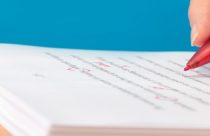Fixing Errors in a Published Paper: Tips for Authors

Mistakes in academic publishing happen for all sorts of reasons. They range from simple typographic errors to willful manipulation of findings or results. The way in which these errors are handled depends largely on their severity or magnitude and whether they were intentional. Tips for authors as they respond to a mistake in a published paper will be based upon the classification of the error.
Mistakes in Published Paper
- Unintentional errors include those associated with data collection or classification, statistical analysis, information that cannot be verified by a peer reviewer, typographical errors and misspellings, or labeling a figure as “on the right” or “on the left” when the opposite is true.
- Essentially, unintentional errors comprise mistakes that were not willful on the part of the author or publisher and do not compromise the outcomes of the research.
- Intentional errors constitute academic misconduct and include concurrent submission of a single paper to multiple journals, conflicts of interest, fabrication or manipulation of data, noncompliance with research protocols, plagiarism, and dividing a manuscript into several small papers (“salami slicing”).
- Academic misconduct “affects the publication record or the scientific integrity of the paper, or the reputation of the authors or the journal.”
Types of Mistakes
For peer-reviewed content, error types can be categorized as:
- Erratum–If a significant error is made by the journal that may affect the work or reputation of authors, the notification released is called erratum. Corrigendum – If a significant error is made by the author(s), then all the authors must approve and sign the corrigenda (corrections document) or the journal must be informed of their dissenting opinions.
- Retraction – If the results are found invalid, all coauthor(s) must sign a retraction that explains the error and how it affected the conclusions. This will be submitted for publication and is the most consequential error type.
- Addendum – If any additional information about a paper is published, then it can include an Editorial Expression of Concern. It is attached to those papers that editorial staff feel require additional explanation in order to be understood.
Related: Received referee comments after a recent peer review? Learn how to respond to reviewers now!
How to Correct Mistake in a Published Paper?
The response to a published error will depend upon the nature of the error and the individual or organization calling attention to the problem. Typically, those who advise a journal of potential problems with a published paper are readers/other researchers, authors, editors, publishers/journal owners, and members of the organization or institution from which the work was produced (universities and research labs).
In essence, two parties must respond to an error in a published paper: the author(s) and journal editors. Let’s start with journal editors. The assessments can be made on a case-by-case basis. For example, following can be considered by editors faced with a mistake in a published paper:
- What is the nature of the correction request?
- Who is making the request?
- Who will write the correction?
- What wording should be used for the correction?
- When should the correction be published?
- When to remove the retracted article the online site?
- When is it acceptable to alter the HTML version of a published article?
- Is there a statute of limitations for publication of errata and/or retractions?
- Can the original (or different) authors republish findings of a paper that has been retracted for fraud or a simple error?
There are separate guidelines for Errata, Retractions, and Expressions of Concern. Both journals and open access publishing entities will have specific guidelines for making these corrections. For example, Nature bases its decision-making on four guidelines:
- Consideration of reader interest
- Novelty of arguments
- Integrity of the publication record
- Fairness to the parties involved
The process of responding to an error in a published paper is complicated and burdensome to all involved. However, journal editors are responsible for maintaining the integrity of their publication and upholding strict standards for good science.
What Should Authors Do on Realizing Mistakes in Their Published Research Paper?
Authors have two choices when faced with the revelation of an error in their published papers: attempt to avoid the consequences or make public corrections. Retraction policies and methods of correcting errors or creating an addendum to a research paper will vary by journals. When the author’s and journal’s reputation are at stake, it is best to deal with the error directly and quickly.









